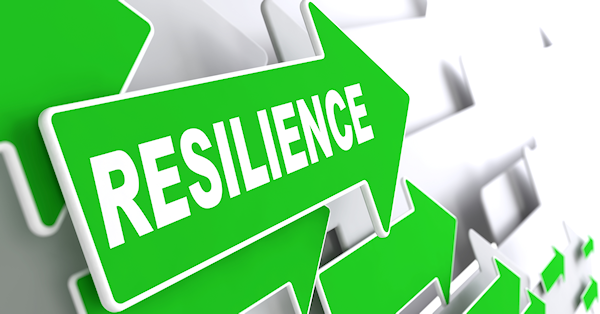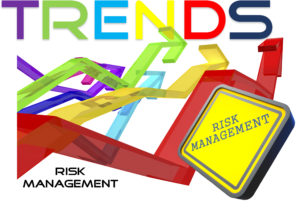The late novelist Ayn Rand once wrote, “You can avoid reality, but you cannot avoid the consequences of avoiding reality.” The COVID-19 pandemic has highlighted the truth of Rand’s statement. Most business leaders faced the reality of the pandemic fairly quickly and, in most cases, the reality wasn’t pleasant. Some companies discovered their supply chains were not as resilient as they had imagined. You’ve likely seen or read a number of articles about how to make your supply chain more resilient. Resilience is defined as the capacity to recover quickly from difficulties or display toughness. Amit Gautam (@AmGaLive), President of Innover, observes, “The Covid-19 pandemic has permeated every aspect of our lives. The World Trade Organization estimates that the pandemic could result in anywhere from a 13% to a 32% decline in global trade for 2020.”[1] Like many other pundits, Gautam believes business leaders need to make their supply chains more resilient. He notes, “Supply chain resilience depends on two complementary factors: Resistance capacity, which refers to the avoidance and containment capabilities of a supply chain system; [and,] recovery capacity, which indicates the capability of a supply chain system to return to functionality after the disruption.”
The case for more resilient supply chains
Allan Dow, President of Logility, observes, “You can’t control circumstances, but you can control your response. Take charge now to ensure the best outcomes later. … What’s needed now is a focus on building the resilient enterprise.”[2] Barbara Jorgensen, Editor in Chief of EPSNews, agrees that companies need to focus on things they can control when bad things happen. She writes, “Organizations can mitigate the impact of such events and are focusing on things they can manage.”[3] Gautam, Dow, and Jorgensen all point to technology as a way make supply chains more resilient. Gautam states, “The Covid-19 crisis may well be the final nail in the coffin for the legacy supply chain structure and has accelerated the need for technology adoption.” Most, if not all, of the technology to which Gautam refers involves data and digital processes. Dow explains, “It’s time to take back control — digital brick by digital brick — to build a resilient supply chain that’s ready to withstand new challenges and capitalize on new opportunities.” Jorgensen notes, “[Too often] the digital supply chain is considered a ‘nice to have’ versus a strategic imperative. Evidence is growing that long-overdue investment in digital transformation is finally taking place.”
David Sweetman (@sweetmandave), Solution Marketing Director at SAP Business ByDesign, asserts that today’s supply chain environment is so complex only digital connectivity can adequately address it. He explains, “Today’s economic uncertainty is not making the ability to overcome such a complex landscape any easier. Now more than ever, companies must connect the digital fault lines of their disjointed applications, data sources, and processes to strike a sustainable balance between resource utilization and capital leverage throughout the value chain.”[4] Of course, once you connect the “digital fault lines,” you still have to make sense of all the data being exchanged. That’s where cognitive technologies, embedded with advanced analytics, come into play.
Cognitive technologies and supply chain resilience
The staff at CIO Review notes, “Utilization of big data can improve an organization’s risk management strategies. … Big data analytics helps identify enterprise risks that have the potential to negatively impact the business.”[5] One of the most challenging things about the pandemic is that it created a paradigm shift that brings into question how valuable historical data is going to be moving forward. Francesca Gamboni, a Senior Vice President for supply chain at Groupe PSA told participants at a recent conference, “Companies need to stop driving their business by only looking in the rear view mirror. Instead, AI-based tools can be used to capture elements from the environment, which can be correlated with demand and then extrapolated to improve forecast accuracy.”[6] One example of how the pandemic changed the business landscape was the dramatic shift in consumer behavior. As consumer behavior changed, Enterra® clients had lots of questions about exactly how their behavior was changing, how best to respond, and what other changes were taking place in the business landscape. As a result, we found new ways to combine and analyze data in the Enterra Global Insights and Optimization System™ to help find answers.
Another interesting way cognitive technologies can be used to make supply chains more resilient is to create a supply chain digital twin. In addition to cognitive solutions that integrate data and “allow everyone to see the same version of the truth,” analysts from River Logic suggest “setting up a supply chain digital twin to evaluate supply chain resilience strategies.”[7] Dow agrees. He writes, “You must gain insights in real time by digesting all that data to construct a digital twin of your physical supply chain. This enables accurate and timely decision-making. The outcome: you will operate an agile, resilient supply chain that allows you to simulate disruptions, evaluate options and contingencies in real time to quickly take action.” There are many other ways cognitive technologies can strengthen supply chains and improve performance. The bottom line is that the path to resilience requires digital transformation.
Concluding thoughts
The editorial team at The Network Effect note, “It’s become a world focused on supply chains. The [COVID-19] crisis has moved the discussion of supply and demand into board rooms worldwide. Companies are asking themselves, ‘What could we have done differently, and what should we do now?’ Today, the need for real time information, resilience, and visibility has never been more apparent to more people around the world. The winners in this ‘next normal’ will be those firms that can address their gaps, make adjustments as things change, and capture new market opportunities first.”[8] Cognitive technologies can help them do just that.
Footnotes
[1] Amit Gautam, “Building Supply Chain Resilience For A Post-Covid-19 World,” Forbes, 25 September 2020.
[2] Allan Dow, “Take Back Control and Build the Resilient Supply Chain,” Logility Blog, 13 October 2020.
[3] Barbara Jorgensen, “Supply Chain Focuses on Matters Within its Control,” EPSNews, 8 October 2020.
[4] David Sweetman, “Connecting Digital Fault Lines Reveals A Future Of Business Resilience,” Forbes, 8 October 2020.
[5] Staff, “How Can Firms Apply Big Data in Risk Management?” CIO Review, 28 September 2020.
[6] Cliff Saran, “Coronavirus shows inadequacy of rear-view mirror planning,” Computer Weekly, 24 September 2020.
[7] Staff, “Understanding Supply Chain Resilience & What COVID-19 Taught Us About It,” River Logic, 17 September 2020.
[8] Staff, “Supply Chain Resilience and the Power of Business Networks,” The Network Effect, 30 September 2020.





